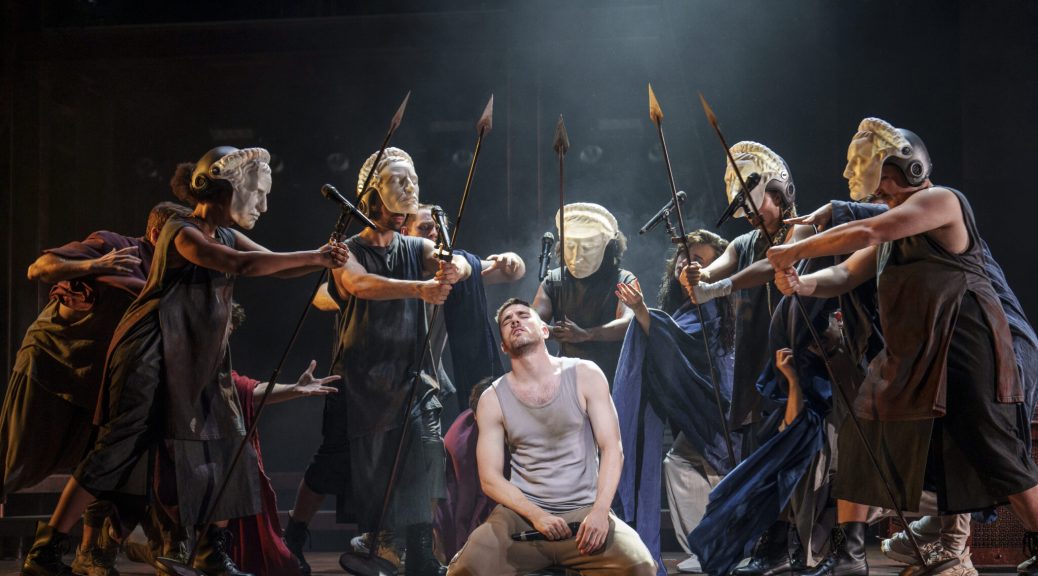Venue Cymru, Llandudno July 1st – 6th 2024 and touring
 (4 / 5)
(4 / 5)
David Ian for Crossroads and Work Light Productions with Nederlander Producing Co. UK with Michael Watt presenting the Regents Park Open Air Theatre Production
Lyrics by Tim Rice and Music by Andrew Lloyd Webber
What’s the fuss? Tell me what is happening.
Telling the story of the last week of the life of Jesus through the eyes of Judas was an original, imaginative idea when this musical was first produced in the early 1970’s. Would this staging of Regents Park Open Air Theatre’s revival recapture that early promise? Owing to the nature of this story, this would be a near certainty. To recreate the crucifixion of Jesus on stage, if done well, can not fail to be dramatic and this production adds plenty of imagination to this already thought provoking musical.

The cast attacked this story with elan, Luke Street who played Judas in this performance was suitably moody and filled with angst. The moment when he took the payment for his betrayal was done very well. Ian McIntosh as Jesus grew into his role and provided some stand out moments especially as he was praying in the Garden of Gethsemane shortly before his arrest. Strangely though, Jesus is portrayed as a vulnerable man who is struggling to come to terms with his fate throughout the play. However, aside from his episode in Gethsemane, Jesus was in control and walked knowingly towards his fate, scathing to those who attempted to deflect him.

The choreography was well planned, purposeful and added to the drama. The set put the cross at the centre of the production, although it was odd that the chief priests walked on an instrument of torture that in Biblical times was a symbol of being cursed. They would have been ritually pure therefore would never knowingly touch such an instrument of death.
The musical is stuck in a time warp to some extent, the music and lyrics resonant of the early 1970’s and since then some of the stories concerning Jesus are less well known. It would help to have a good working knowledge of these biblical events. However, it was great to hear this score once again as some of the songs have become favourites for many. Hannah Richardsons rendition of ‘I don’t know how to love him’ and ‘Everything’s alright’ were beautiful.

It is easy to see the play is not without its problems including the logical flaw in its premise. Telling the story through Judas’ eyes is an intriguing idea, but of course, he was not around to see the crucifixion having already killed himself. He is the side story. The power in this story is not the actions of Judas, but what happened to Jesus. Even then, crucifixion in itself is not significant. It is just another, particularly grisly form of execution. One Roman commander crucified 500 people in one day. He would have killed more but ran out of wood. It is the death of Jesus that is significant and it is what happened to, and about Jesus after his death that makes this any story at all. To give Judas a sort of equal billing as Jesus after their death, sitting down together in the afterlife as the last scene depicted seems very strange.
However, we should not let factual relevance get in the way of a good story and this remains a striking piece of theatre that brings more awareness of the death of Jesus to the general public. While it may not be doctrinally sound to those who profess faith, it avoids being offensive as some other plays or films have been. The first time I saw the play if became a memorable experience. This too will stay in the memory for a while.

